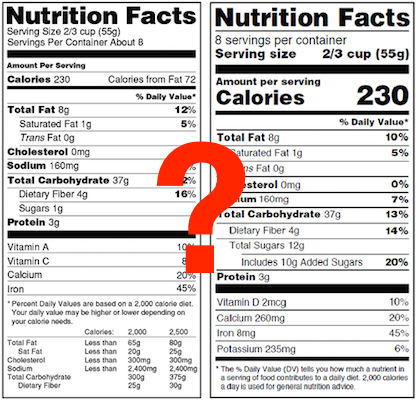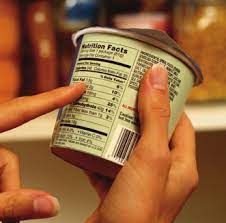Finished Goods Meaning & How to Keep Track of Inventory
Finished goods are the cash cows of your food business. Why? Because your products are one of the only ways you can make money - selling products to retailers, consumers, and 3rd party sellers.
Managing this process can get complex. You thought simply making your product was a battle? You have to handle supply chain management, calculating cost of goods sold, operations management, production, etc. But, arguably the most important part of your business is how you handle your finished goods inventory.
In this article, we’ll explore managing your finished goods inventory, lot-tracking, recall planning, and inventory analysis. Grab your coffee and let’s go!
Keeping Track of Finished Goods Inventory
When things start to ramp up, keeping track of your finished goods inventory can get crazy. Your product can end up all over the place in one location and in multiple locations so that you have no idea where everything is or what to do next. That’s why you have to keep an organized system.
Wherever things might be, make sure your product is off the floor. Many state health departments require this, so keep it in mind whether you store your product in your basement or dining room, at a self-storage facility, or at a third-party fulfillment warehouse. If you store product yourself, we love these shelves from Amazon. You can also use recycled pallets.
However you choose to stow your product, make sure you're taking into account how you're going to get at it and replenish it. For food, it's great to organize your inventory by the FIFO method we talked about in the last article - the product you made first should be the product you sell first, so you want to keep it at the front/top of the heap. Admittedly that can get tricky if you have to get new product to the bottom or back of the pile! But if you're taking that into consideration when you first start storing, it will be easier. And this method also keeps your lot-tracking straightforward.
But what if you're storing your product in multiple locations? (AHH!!). If you use Shipwire for fulfillment (or a similar fulfillment service), you likely have product at each warehouse to fulfill your wholesale and online orders. Not to mention product with Amazon FBA, some product at your house, and then another 3rd-party seller. This means you have to track where all that finished goods inventory is, and in more or less real-time.
Don’t worry - there’s software for this! Keeping tabs on your inventory by using a system that works for you - even if it’s paper and pencil - will help you with the next few steps, as we get into recalls and tracking.
What To Track After You Sell Product
When you sell or ship product to a retailer, distributor, or directly to a consumer, you need to keep track of the batch code (aka lot code), who it was sent to, the ship date, and the best-by date.
Most small businesses do this in a binder, notebook, or Excel sheet, but we highly recommend inventory management software. Keeping track of this information digitally helps you quickly look up where products went after they were sold. Speaking of looking products up, let’s briefly touch on product recalls.
Recall 101: Preparing For A Mock Recall
Recalls are issued when there is a danger or possible danger to consumers if they use your product. Because consumer safety is a top concern of agencies like the FDA and the CDC and for the public at large, we recommend you take recalls very seriously.
This section isn’t an end-all and be-all on recalls (for that, it’s super-helpful to read the FDA guidelines), but we’ll go through what a mock-recall looks like.
Mock recalls typically happen when you get inspected by a third-party auditor. Third party audits are part of life once your product is sold by retailers like Whole Foods, Costco, and Wegmans. They run through good manufacturing practices, storage, and mock recalls. We highly recommend practicing a mock recall before your audit to get your nerves out.
What happens during a mock recall?
Let’s pretend a consumer contracted salmonella from your hummus (making this up!). You’d have to follow these steps in your mock-recall:
- Assemble your recall team.
- Determine the extent of the affected product.
- Track where the affected product went (retail, distributor, food service, direct, etc.)
- Notify the FDA of your recall should it be large enough to warrant a warning for the general public.
- Contact any partners or distribution channels that were sent product involved in the recall.
- Make sure you have a main point of contact to handle inquiries from retailers and customers.
This is a basic to-do list for a recall. Many companies have processes in place that are far more complex. For more information on recalls, see the FDA recall guidelines here.
Inventory Analysis: Three numbers to monitor
Getting back to managing your finished goods inventory from a business standpoint, there are three stats we think are important to keep track of for finished goods. Many software packages help you quickly calculate these numbers, but we’ll include formulas just in case.
Stat #1: Average Inventory
Average inventory is the average cost of inventory on-hand, over a certain time period - usually a year. You can also identify inventory at a certain point in time. We’ve found this most helpful when we’re predicting sales forecasts. Looking at how this number fluctuates over the year could show you sales insights, predict production increases, or identify increases in your cost of goods sold.
To calculate your inventory cost, make a list of all flavors and multiply the number of units by the product cost for that unit. You can calculate this number with or without labor included. Plus, if you want a complete picture of your inventory, you should also calculate the value of your ingredients and packaging supplies. As we’ve identified in previous articles, this is where your cash is hiding - in raw materials and finished goods inventory.
Stat #2: Inventory Turnover
This is the number of times your inventory is sold and replaced in a certain time period. Higher turnover means fast-moving, fresh product. Slower turnover means lagging sales. To calculate your inventory turnover, divide your Cost of Goods Sold by your Average Inventory.
This stat gives you an idea of how much money you’ll need to replenish your inventory.
Stat #3: Average Days to Sell Inventory
If you've been staring at a pile of product wondering “why do I have so much?”, you may want to look at how long it takes you to sell that inventory. For example, we’ve seen 1,000 units of product produced in June not sell until the end of December. Six months is a long time to hold on to product. To calculate this, make note of the date the batch was produced and then when the last unit from the batch was sold. That’s the number of days it took you to sell that batch (and it's another great reason for lot tracking!).
Long periods of time mean either the product is a poor seller or you're producing too much of it at a time. Short periods probably mean you have a best seller (good job!).
BONUS STAT: We like to calculate sales velocity, too, which is a different way of looking at average inventory. Take the number of units of a product sold over all time and divide that by the number of months it’s been on the market. Do this for all of your SKUs to see which products sell faster.
Here’s an example:
| SKU | Units | Months | Velocity |
| Blueberry Jam | 1,000 | 12 | 83.33 |
| Strawberry Jam | 800 | 8 | 100.00 |
As you can see in the table, Strawberry Jam hasn't sold as many total units, but it is out pacing Blueberry Jam because it’s been on the market a shorter period of time. That means it's selling better.
While you should be focused on selling your finished goods and making sure they’re tracked well for recall purposes, sometimes these stats open your eyes to inventory changes from production to sales and show you where to focus, make changes, and cut your losses.
Final Thoughts
Inventory planning is necessary to make sure you run a tight ship. Whether we're selling jam on a small scale or in national distribution, we’re all responsible for tracking our finished goods inventory from start to finish. And the ability to recall this information should something go wrong is critical to providing the necessary safety information to the FDA, your retailers, and your customers.
With our tools from ReciPal, you’ll be one step closer to taking inventory seriously. Let us know how we can help you walk through this process.






